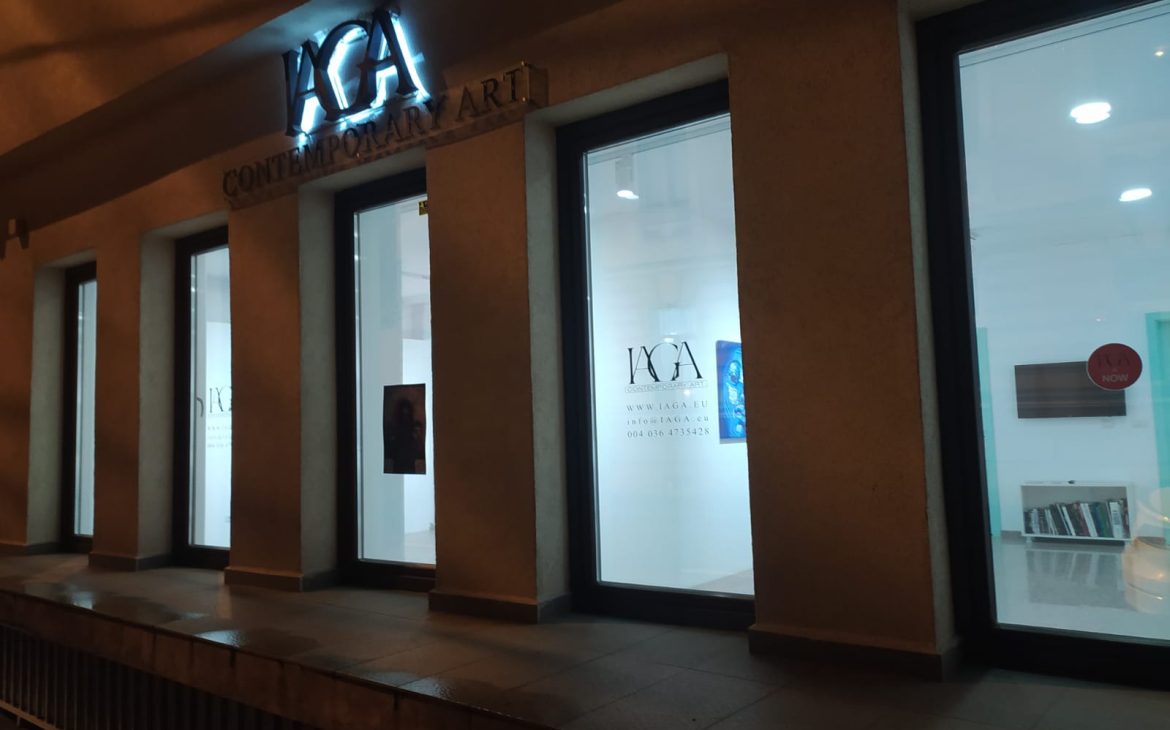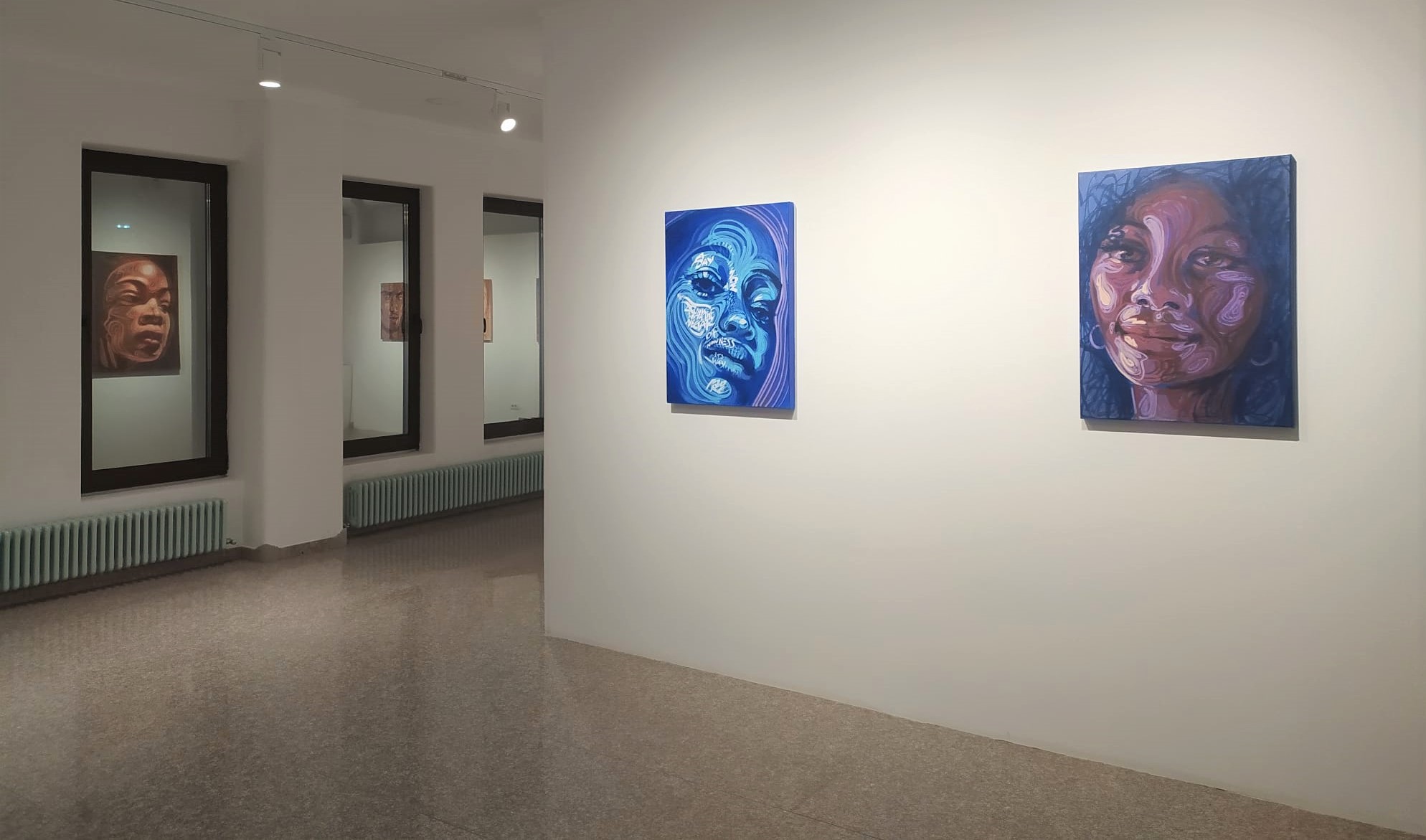The most recent exhibition by Cluj-based artist Gabriel Marian, “The Map is not the Territory”, an event inaugurated on February 2nd, is an artistic endeavor occupying a space at the intersection of three major realms: portraiture, the genre of visual representations paired with textual/narrative inserts and non-figurative art. The works showcased and specially prepared for the event hosted by Iaga Contemporary Art gallery are part of the artist’s Written Portraits series.
The portraits can be described as a set of close-ups done in Gabriel Marian’s signature style, by way of a technique that combines classic pictorial brushstrokes and calligraphic drawing with the help of which various texts are inserted in the construction of the faces depicted. The majority of the texts belong to authors particularly meaningful to the artist.
These “deconstructed eurocentric approaches”, in acrylic marker, constitute the highpoint of an artistic production that took place over 2-3 years. The result is the culmination of a doctoral dissertation obtained in 2022 by Gabriel Marian, from the University of Art and Design in Cluj-Napoca.
The title of the exhibition itself is indicative of the artist’s inspiration – namely, researching the processes of colonization, territorialization (understood as a social relationship that organizes the hierarchical, cultural, and economic connections between various groups or even peoples), and recolonization.
It is this mutation of the relationships established between the place of origin, territory, and body, as well as the relativization of this rapport, and ever-shifting meanings given to local cultural practices that are debated in Gabriel Marian’s show.
The key concepts used in the theories of colonization formulated by the famous French duo, Gilles Deleuze (French philosopher) and Félix Guattari (French psychoanalyst, theoretician, and expert in semiotics) are illustrated by: “territory”, “map”, and “border”. To these is added an analysis of the capitalist system, primarily how it affects routes of contact, communication, and relations between varying social groups, at the level of cultural and identity representations.
The traditional tokens of so-called nationalist identities trapped inside the physical confines of occupied lands and oversimplified into stereotypical views on cultural significance are no longer up to date. They are (and must be) overcome. Globalization, therefore, seems to be affecting and leaving its mark on the local color of small-scale socio-cultural practices, in both positive and negative ways.
Through its chosen subjects, the current exhibition is set in opposition to one of these negative corollaries. What is being questioned is the recurrence of eurocentric beauty standards, as well as a traditional preference in the art academies to call attention to and even glorify those artists and subjects which mainly reflect European cultural ideals. It is why “The Map is not the Territory” places on display a large variety of physiognomies, starting from male to female faces, showcasing both youthful characters, alongside the close-up portrait of the octogenarian Gayatri Chakravorty Spivak, a literary critic of massive influence in the field of postcolonial studies and political feminism, and finally including representations of indigenous characters, such as that of a warrior.
The paintings are accompanied by different textual excerpts. Among them is a poem signed by Marcia Kambeba, a writer specializing in the subjects of the Amazon and indigenous cultures of Brazil. Also selected are passages from Maya Angelou’s “Wonder”, lines from Virginia Woolf’s novel “The Waves”, and part of Margaret Atwood’s poem “The Moment”. The artist recommends, as key to a possible interpretation and reception of his exhibition – to take the works in from a distance. This is how the figurative character of the paintings is highlighted. But as we draw closer, the brushstroke becomes the focus, the figure turns into writing, and the text turns into an abstract line.
The exhibition can be visited until February 28th, from Tuesday to Saturday, between 2-6 p.m. at IAGA Contemporary Art (Cloşca Street, no. 9-11, Cluj-Napoca).
An event produced by IAGA Contemporary Art in collaboration with Camilla Remondina, curator of the exhibition.











